The Port For Beijing
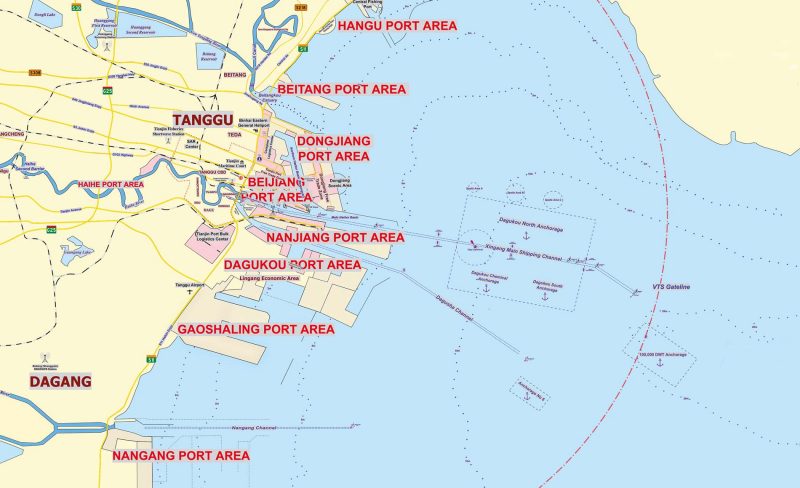
Tianjin (Tientsin) is one of the three great cities of China, the others being Beijing, eighty five miles west of Tianjin, and Shanghai. All three cities have administrations that report directly to the Central Chinese Government, whereas the 23 provinces and 5 autonomous regions of China do not report directly to the Government. The Tianjin to Beijing region is heavily populated with a density in excess of two hundred persons per square kilometre, and Tianjin having a population of around 15.5 million. Tianjin is in North Eastern China, and borders Hebei province and the Beijing municipality, and is bounded to the east by the Bohai Gulf of the Yellow Sea. The main industries are the manufacture of seamless steel pipes, oil refining, textiles, electrical products, steel rolling mills, copper refining, salt production, machine tools, chemicals, tobacco, food processing, shipbuilding and ship repair, and the handling of over 20 million containers and over 600 million tonnes of cargo per annum in the busy Port of Tianjin. The top 20 container lines in the world call at Tianjin, with 115 regular container services operated by 60 liner companies.
History Of The Port Of Tianjin
The Tianjin area where the Hai river empties in Bohai Bay was marshy and poorly drained for many centuries until a customs post was set up in mediaeval times. The port was formally established during the early era of the Tang Dynasty (618 AD to 907 AD), and increased in scope during the Ming Dynasty (1368 to 1644) and the Qing Dynasty (1644 to 1912). The first ever British mission to the Chinese emperor was in September 1793 when Viscount George Macartney arrived in Tianjin with two ships. The first was a 64 gun warship and the other was the largest and fastest ship in the fleet of the East India Company. They had taken a year to reach this port in North Eastern China, from where the goods of the mission were unloaded into 85 wagons and 39 handcarts and taken to the capital of Beijing. This was one of the greatest missions ever despatched by Britain to China. Britain then fought the First Opium War of 1839/42 to preserve its sale of opium to the Chinese in return for silver, after Chinese attempts to supress the trade had led to their loss of Hong Kong to Britain.
During the Second Opium War from 1856 to 1860, Western nations, and particularly Britain and France, demanded access to China. An Anglo-French force stormed Tianjin in 1856 and captured and deported its Governor after the city had quickly fallen. In April and May of 1858, the same force took the Dagu forts at the mouth of the river, and Beijing was again at the mercy of the foreigners, and the Qing Emperor capitulated. The result was the Treaty of Tianjin, which imposed heavy terms on the Chinese. Six Treaty ports were to be opened by the Chinese to Western powers, four of them in the heavily guarded areas of Tianjin and Shandong, with four more on the Yangtze river in the Nanjing and Hankou areas.
Travel in the Treaty ports was to be unrestricted and passports issued to enable travel across the whole of China. The British Ambassador was to be accompanied by his family and retainers, and the import of opium from India was legalised. However, the Chinese did not honour the Treaty of Tianjin with an Anglo-French force repulsed in 1859 at the Dagu forts. A year later, 20,000 British and French troops took Tianjin again after some of their captured colleagues had been executed by the Chinese. The summer palace of the Qing emperor was looted and burned to the ground, with great loss of face to the Qing dynasty and its emperor fled in hiding to the mountains. China was a very poor nation at this point of time and its entire military forces numbered no more than two thousand troops.
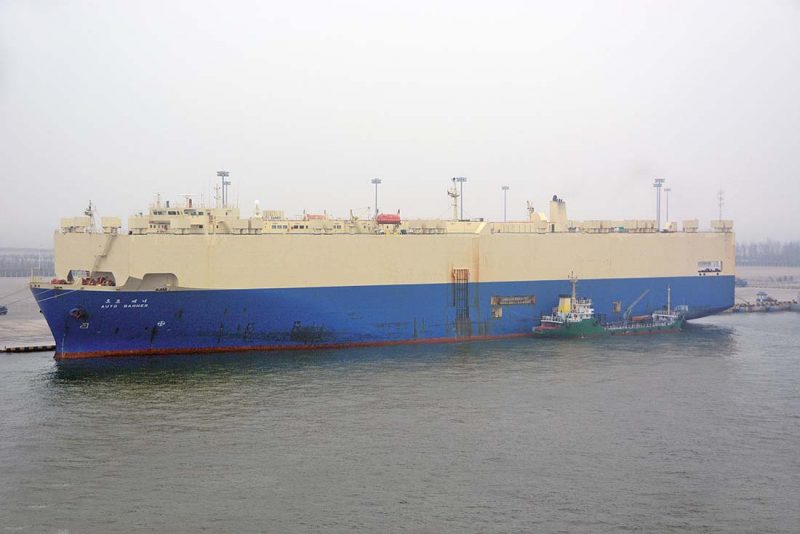
The 1860 Convention of Peking gave part of the Kowloon peninsula to the British colony of Hong Kong, as well as Tianjin becoming a major Treaty port and the gateway to the capital of Beijing. Tianjin gained the Tianjin Machine Factory manufacturing munitions in 1870 and it became a major naval port. The Tianjin Massacre took place in 1870 after foreign arrogance and insensitivity to Chinese feelings had taken place by Christian missionaries. Christianity was a disturbing influence in Chinese eyes, and Tianjin was particularly vulnerable to anti-foreign sentiment since the occupation by Anglo-French forces in 1858. The practices of the missionaries regarding orphans came under scrutiny, and the Chinese inhabitants were incensed by rumours of maltreatment of these orphans. A mob gathered and demanded justice and the French consul, Henri Fontanier, fired a pistol into the crowd, killing a Chinese. The mob then fell on him and killed him along with ten nuns, two priests and several other foreigners. When the Anglo-French demanded reprisal, the Chinese authorities became conciliatory and agreed to pay silver bullion for the loss of lives and property, and sent an apology to the French and British missions.
The Boxer Rebellion of late 1899 (so-called by the Chinese secret society named the ‘Boxers’ that led it) broke out in Shandong and many foreign missionaries and diplomats were slaughtered. Tianjin was engulfed by this violence in the summer of 1900 as well as nearby Beijing. The expatriate communities, including women and children and the Chinese Christian converts, were besieged in the grounds of the Catholic Cathedral of Beijing. This siege lasted 55 days and was lifted by a 20,000 strong multinational force that took the port of Tianjin and then fought its way into Beijing. The population of Tianjin was 200,000 at this time, with most Chinese living in poverty in the old districts, while the Europeans lived in grander houses near the river.
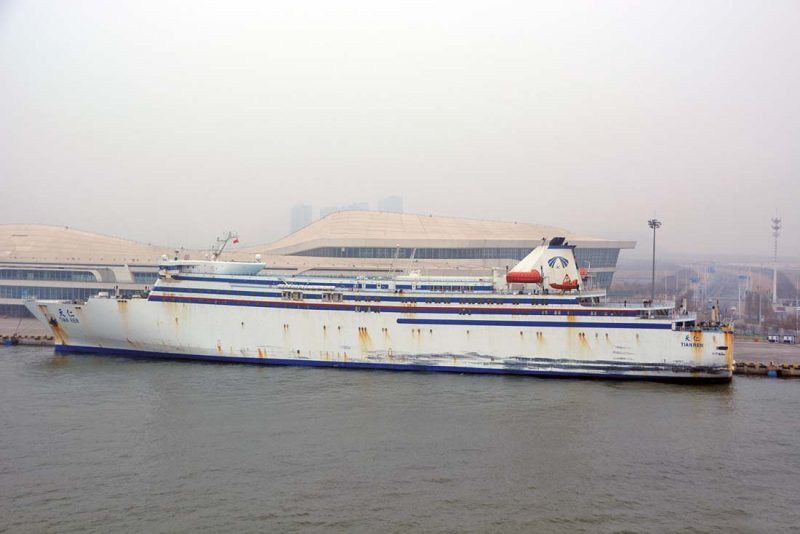
There were around fifty Treaty Ports in China by the end of the Qing dynasty in 1912 including Tianjin, the nearest to the capital. There were twenty Treaty ports in north eastern China, and thirty in central and southern China. Treaty Ports were designated by China as open to foreign residence and trade, with Shanghai, Canton, Xiamen, Fuzhou and Ningbo the first to be opened in 1842. However, these ports became symbols of foreign imperialism and a constant reminder to the Chinese of their semi-colonial status.
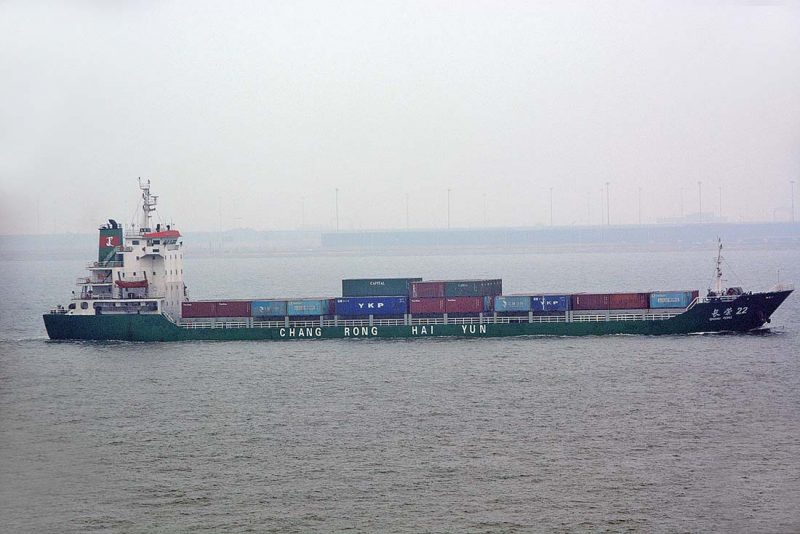
The Treaty Port of Tianjin grew rapidly and came under the direct rule of the Chinese Government. At the end of World War I, China virtually became a Japanese protectorate, and this was opposed by new radical leaders in Tianjin as well as Mao Zedong (Mao Tse Tung) in Changsha in Hunan province. The Japanese had taken from the German settlers during the war their possessions in Shandong and Tsingtao including German schools and their excellent German brewery. Later, the Sino-Japanese War flared up in 1937 after an incident near the city of Wanping to the south west of Beijing and not too far from Tianjin. The Japanese Army had been entitled to station 1,350 troops in the Tianjin and Beijing areas by the Peace Protocol of 1901 at the end of the Boxer Rebellion. However, Japan had built this force up to over 7,000 troops by July 1937 and bombarded Wanping but could not take the city. A local settlement took place, but heavy fighting began two weeks later resulting in the loss of both Tianjin and Beijing to Japan. Many battles then ensued, with Shanghai taken in November 1937, Nanjing (the capital) in December 1937, and the rest of China including the Yellow River, Hankou and Canton in the south during 1938.
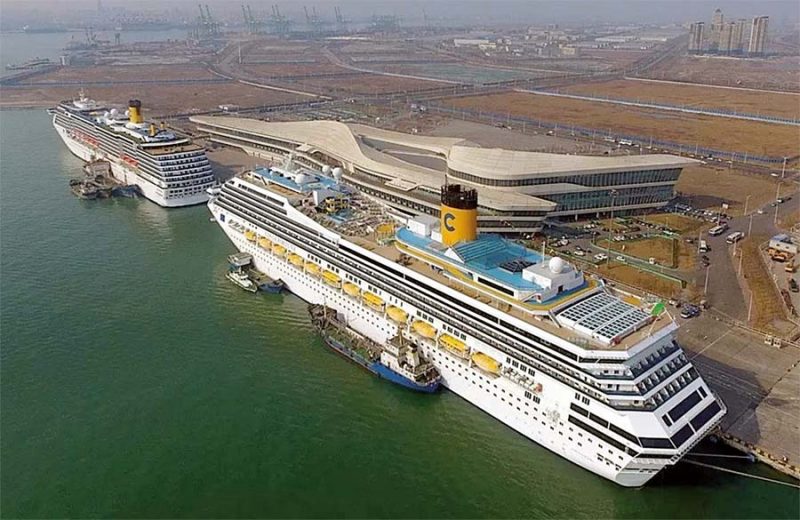
Tientsin was under Japanese occupation during World War II, and the Shell International Petroleum Company ceased operations there during the war. Tientsin was one of ten Far Eastern ports that stored and supplied kerosene and fuel oil from the establishment of Shell by Marcus Samuel in 1892. Shell used a system of ‘compradors’ or agents to organise and run their business in Chinese ports. In 1949, Shell was the only major Western company in the world that was willing to remain in Mainland China. In the Spring of 1966 at the start of the Cultural Revolution that lasted for ten years until 1976, Shell closed its Head Office in Shanghai to avoid persecution of its Western staff. The oil company negotiated with the Chinese Government to take over its Chinese assets, and give their former Chinese staff new jobs with salaries and retirement pensions. The big British shipping companies started by the Jardine family and the Swire family moved to Hong Kong from Communist China in 1949, the Jardine name actually is an Old Norse name for a ‘Javelin Thrower’.
The Port of Tianjin had been virtually destroyed by the Japanese, but was rebuilt by the Hai River Conservancy with foreign investment. During the Chinese Civil War of the late 1940s, the port was held by the Nationalists until it was taken by the Communists in 1949. The Port of Tianjin reopened on 17th October 1952 after rebuilding, and will celebrate seven decades of development on the same date in 2022. The People’s Republic of China has developed the port over the last seven decades to make it into the fourth largest port for tonnage in the world and the tenth biggest container port in the world with the port very busy in handling large numbers of ships arriving and sailing every day.
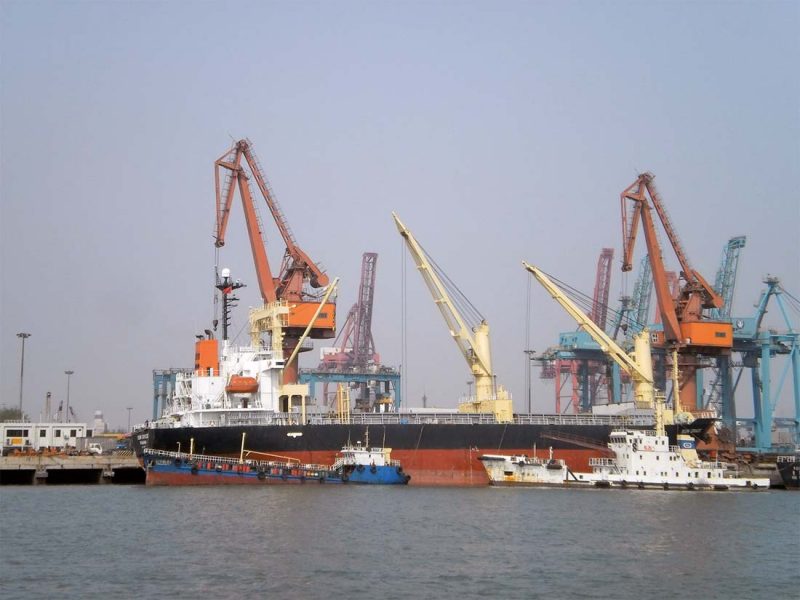

Port Of Tainjin Facilities
The Port of Tianjin employs 40,000 people working for the Tainjin Port Group and its subsidiary of the Tianjin Port Development Company. It handles cruise passengers, coastal passengers, containers, liquid and dry bulk cargo, general cargo as well as the ro-ro export of tractors, cars and vehicles of all types. The organisation of the trade of the port is done by joint ventures with many companies in the Binhai area of the Hai river as it flows into Bohai Bay. The Port of Tianjin is the biggest manmade port in China and covers 107 square kilometres with 13.7 miles of quays and over one hundred berths. In 2010, the port handled 413 million tonnes of cargo and over twelve million TEU of containers, as well as Capesize bulk carriers of up to 200,000 dwt, and the port welcomed between 140 to 160 ships every day. A very tall red and white striped navigation tower guides vessels to the channels, and the Port Control Tower is a very futuristic tower with two circular shaped office areas located around one hundred feet above the ground.
This massive port is split into four quite separate areas at the mouth of the Hai river, the North Port, East Port and South Port, and the East Zone of Nangang Port:-
North Port (Beijiang Port)
It covers 36.8 square kilometres and has 18.9 kilometres of coastline with mostly container and general cargo terminals. This area is mainly engaged in handling the huge quantities of containers and general cargo. In 2012, the port as a unit handled 477 million tonnes of general cargo, making it the fourth biggest port in the world in terms of tonnage, and 12.3 million TEU of containers, making it the tenth biggest container port in the world. MSC Diana of MSC became the first container ship of 20,000 TEU capacity to dock at the port on 1st July 2016. Tonnage handled at the port in 2017 amounted to 600 million tonnes of cargo and 20 million TEU of containers, with further increases in both of these categories due to come online by 2020.
East Port (Dongjiang Port)
It lies on an artificial peninsula ten kilometres in length and three kilometres wide and has an area of 33 square kilometres, and is the newest of the three main ports. This area is engaged in handling container ships as well as ro-ro, logistics and wheeled traffic. The Tianjin International Cruise Port is here and handles many cruise sailings of Royal Caribbean International (RCI) to South Korea and Japan, the company having started the first cruises from Tianjin in 2010. There are also a large number of arrivals of cruise ships of Holland America Line, Celebrity Cruises, Silversea Cruises, Seabourn Cruises, Norwegian Cruise Line (NCL), Costa Cruises, Star Cruises, Azamara Cruises, Princess Cruises, Cunard Line, Windstar Cruises, Cruise and Maritime Voyages, MSC Cruises, Viking Ocean Cruises, and Regent Seven Seas/Oceania Cruises. There are two cruise berths, each of length 2,050 berths at the south end of East Port, with six more cruise terminals on the drawing board for future use. Passengers use the Cruise Port as a stepping stone to visit Beijing city, the Huangyaguan section of the circuitous Great Wall of China in Northern China, as well as the delights of the old city of Tianjin.
South Port (Nanjiang Port)
It lies on an artificial island 16 kilometres long and up to 2 kilometres wide with an area of 26 square kilometres. The shoreline of the port is 14.2 kilometres on the north side, and 12.0 kilometres on the south side, which opens out onto the Dagusha Channel. This area focusses on dry bulk and liquid bulk cargoes with several oil tank farms as well as LNG (Liquid Natural Gas) berths and huge storage tanks. A common sight here is the arrival and departure of bulk carriers of up to 300,000 dwt and able to navigate the main entrance channel with a draft of 21.0 metres on high tide.
East Zone Of Nangang Port
This is a new port area focussing on the import and export of bulk cargoes of coal, coke and iron ore through massive mobile mineral new loaders and unloaders. This port is still very much under construction.
The large number of terminals and quays in these four areas are extremely busy, with 7 large Container Terminals having over eighty Panamax and Super Post Panamax gantry cranes, each able to handle lifts up to 65 tonnes. These are :-
- Pacific International Container Terminal with six berths of a total of 7,546 feet.
- Five Continents International Container Terminal with four berths of a total of 3,944 feet.
- Orient Container Terminal with four berths of a total of 3,734 feet.
- Euroasia International Container Terminal with three berths of a total of 3,937 feet.
- Shenghua International Container Terminal with three berths of a total of 3,609 feet.
- Tianjin Port Container Terminal with four berths of a total of 4,341 feet.
- Tianjin Port Alliance Container Terminal with three berths of a total of 3,609 feet.
- All 7 container terminals have alongside depths of up to 16.0 metres.
There are 14 large Bulk and Breakbulk terminals in the port handling cargoes of iron ore, mineral ores, coal, coke, timber, construction materials and many other bulk cargoes. There are 14 Oil and Chemical Terminals in the port, with the biggest handling China National Offshore Oil Corporation (CNOOC) cargoes of crude oil and LNG (liquid natural gas) at 2 separate terminals. There are 2 Ro-Ro Terminals in the port, each with 2 berths for Ro-Ro carriers of up 70,000 dwt, with annual throughput of 700,000 CEU (car equivalent units). The Port of Tianjin is truly massive in the huge quantities and scope of cargoes handled.
The Port of Tianjin has seven anchorages to the east and south of the port with depths up to sixty feet. The Main Shipping Channel is of length 24.5 miles and can handle vessels up to 300,000 dwt at high tide and up to 200,000 dwt at low tide with two way traffic and a clear depth of 64 feet at low tide. The Dagusha Channel is separate from the Main Shipping Channel, and the North Branch Channel leads to the North Port, with both channels having two way traffic for vessels up to a draft of around fifty feet. There are several warehouses in the port with capacities of up to 150,000 cubic metres of cargo, as well as storage and collection facilities in the Port of Tianjin Free Trade Zone, which opened for business in 2008.
The Port of Tianjin Coal Terminal has storage for nearly two million tonnes of coal, and the port has large amount of open container storage capacity as well as a huge array of rubber tyred cranes, reach stackers, empty container handlers, trailers, forklifts and mobile cranes. Maersk Line, CMA CGM, MSC, OOCL, ANL, Libra Line, Wan Hai Line, and the big Chinese merged COSCO/CSCL container line call every day at this busy port with transhipping facilities. Royal Vopak of Holland and the Tianjin Bohai Chemical Industry Group have a joint venture terminal with two jetties and began with 100,000 cubic metres of storage in 2010, and has increased this to a final figure of 380,000 cubic metres. Three logistics companies including Wallenius Wilhelmsen operate nine multi-purpose berths with cranage to facilitate ro-ro, general cargo and haulage requirements.
COSCO has been a major client of the Port of Tianjin since its formation in 1961, and by Millennium year had a big fleet of 250 container and multi-purpose ships, as well as 150 bulk carriers of up to the Capesize range of 180,000 dwt. COSCO has twenty regional operating subsidiary companies, with ships registered and operated from Beijing, Shanghai, Dalian, Guangxi, Guangzhou, Hainan, Hebei, Hunan, Jiangsu, Jiangxi, Lianyungang, Nanjing, Qingdao, Shenzhen, Tianjin, Tanggu, Xiamen, Yantai, Zhejiang and Zhuhai. The COSCO Shanghai subsidiary is the oldest and largest subsidiary, dating from 1964 and had a fleet of over 150 ships totalling over three million tonnes deadweight thirty years later.

At the Millennium, the COSCO Tianjin subsidiary was managing and operating three dozen ships including Panamax bulk carriers, container ships, general cargo ships and multi-purpose ships. COSCO and CSCL merged on 18th February 2016 to own or charter a fleet of well over one hundred big container ships with capacity up to 20,000 TEU, as well as many feeder container ships. On 26th October 2017, China COSCO Shipping Group signed a big co-operation framework agreement with the Port of Tianjin Group. Six weeks later on 6th January 2018, the first multi-modal export service of fifty full COSCO containers started by rail on its land journey from Tianjin to Moscow.
The Tianjin First Pier Wharf is the operating base for the Tianjin Port Tug and Lighter Company (TTLC), operating 26 harbour tugs up to 6,000 bhp, five pilot launches, two floating cranes and over fifty lighters and auxiliary craft. Pilotage is compulsory for all foreign flag vessels and for some Chinese vessels, with the Pilot Station near to the Port Hospital and it has between 160 and 180 pilots on call on a 24 hour, seven day week basis. Vessels arriving or sailing from the port trade with six hundred ports in 180 countries worldwide. The Port of Tianjin has actively increased terminal operation, international logistics, port real estate and port customer services during the Twelfth Five Year Plan of 2011 to 2015, with the number of worldwide shipping clients having increased dramatically.

Tianjin Pipe Corporation
A major export from the Port of Tianjin is seamless steel pipes for the oil and chemical industries. These are manufactured at Tianjin by the Tianjin Pipe Corporation (TPC), which was founded on 11th December 1987 as one of the major projects of the Chinese State Eighth Five Year Plan. The TPC was able to borrow finance from the Chinese State owned banks at a preferential rate of interest.
However, the United States International Trade Commission placed tariffs of 63% on imports of steel pipes from China on the grounds of unfair pricing and State Government subsidies that made it impossible for American firms to compete. TPC sales in the United States slumped completely after the tariffs were introduced, but it solved its predicament by opening a plant near the Port of Corpus Christi in Texas to produce 500,000 tonnes of steel pipe from recycled scrap metal each year. This Corpus Christi plant employs six hundred people and even enjoys tax breaks from the Texas administration.
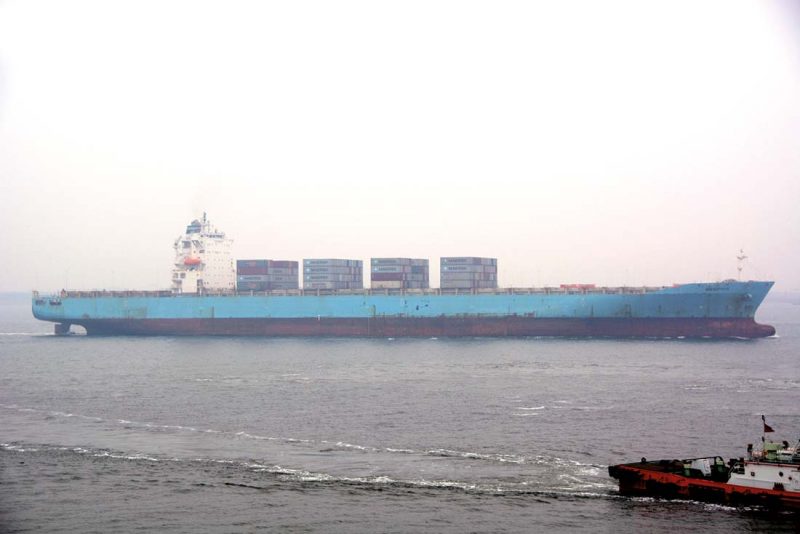
The 253 acre seamless steel pipe facility at Corpus Christi cost around $2.7 billion to build in two phases. Phase One was the production facility of coated and finished underground and underwater pipes for use in the oil and gas industries. Phase Two was the construction of a Rolling Mill to produce 500,000 tonnes per annum of seamless steel pipe with a diameter of up to almost one foot, some to be coated and finished at the Phase One finishing facility. TPC America supplies American customers at the moment but will in the future develop a substantial export market to rival the huge production of seamless steel pipes at the large Tianjin factory of TPC.
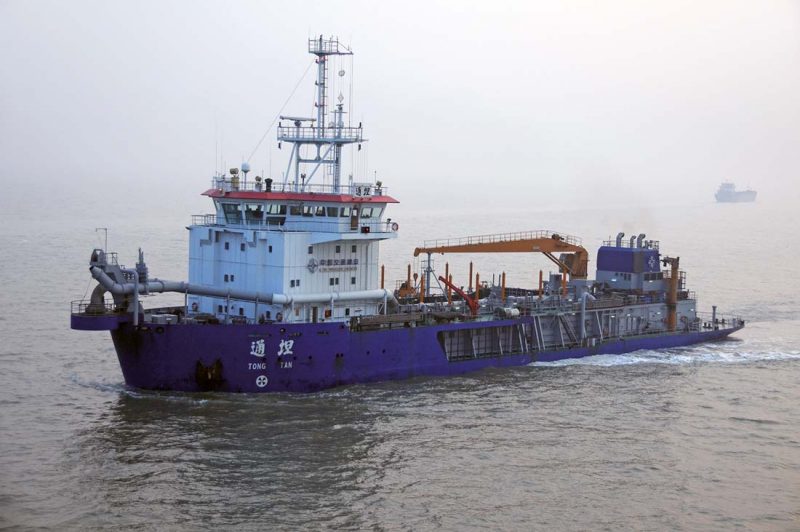
Ferries From Tianjin To South Korea And Japan
The ferry port of Tianjin is fifty kilometres east at Tanggu port, which also has container handling gantry cranes and berths. Jinchon Ferries provides four sailings per week to Inchon in South Korea, and takes 25 hours for the passage on a Tuesday, Thursday, Friday or Sunday.
There are also two return passages per week to Kobe from Tanggu, taking just over two days for a one way passage Yanjing is a twin funnelled, white hulled conventional passenger and ro-ro freight ferry of 9,960 grt that was completed in March 1990 by the Onomichi Zosen yard in Japan with accommodation for a total of 442 passengers, mostly unberthed. She is of length 135.0 metres, moulded beam of 20.6 metres and a draft of 6.3 metres, with good Chinese and Japanese style restaurants, a chess and card room, games room, library and a cocktail lounge. She sails from Tanggu to cross through the Bohai and Yellow Seas past South Korea to Kobe on the Inland Sea of Japan. Cheju Do, an island off the southern tip of the South Korean peninsula is passed before the Kanmon Strait is reached, separating the island of Kyushu from the big island of Honshu.
The ferry then passes below the Pearl Bridge that links Kobe with Iwaya, and which is the largest suspension bridge in the world with a central span of over 1.2 miles.
China Ropax A/S run the big passenger and ro-ro freight ferry Tian Ren of 26,463 grt from Tanggu to Inchon. She was completed as Blue Zephyr in July 1990 by the Kanda Zoshensho yard at Kawajiri and was sold in November 1999, becoming Tian Ren. She has dimensions of length 186.5 metres, moulded beam of 25.0 metres, and a draft of 6.9 metres, and is fitted with a quarter bow ramp, a side ramp and a stern ramp. She has accommodation for 630 unberthed passengers, plus 32 cabins for 64 berthed passengers. She has a service speed of 23.2 knots from twin four stroke nine cylinder Pielstick diesel engines of 32,400 bhp. She has a white hull and has space for 170 lorries and 150 cars on her vehicle deck. There is also a local ferry service to the Chinese port of Dalian, leaving from Tianjin Xingang Passenger Terminal.
Tianjin Xingang Shipbuilding And Shiprepair Yard
The Port of Tianjin has several shiprepair and shipbuilding yards capable of carrying out almost all forms of shiprepair, ship conversion and shipbuilding.
The Tanggu Port area was one of the earliest shipbuilding areas of China, with Taku Dockyard founded in 1880 and now operating as Tianjin City Shipyard as the oldest modern dockyard in North East China. Many small yards operated on the Hai river but most have closed in recent years to make way for the large development of the Binhai Urban Core.
The main shiprepair and shipbuilding yard is the CSIC Tianjin Xingang yard, founded in 1939 and located at the very end of the main harbour basin. This yard has built a long and impressive list of fishing trawlers, coasters, pontoons, general cargo ships, feeder container ships and several types of larger vessels.
The adjoining yard is the CCCC Bomesc Maritime Industry yard built in 2007. The famous Sembawang yard of Singapore opened a Chinese subsidiary yard as a joint venture with Bohai Oil as the CNOOC Bohai Oil BOHIC subsidiary.
A few small yards offer repairs afloat or underway using the specialised ship JIn Yuan Hang Xiu, a work vessel of 928 grt and built in 1978 as one of only five such vessels operating in China.
The Tianjin Xingang yard has built passenger ferries such as Tian Hu and Tian Chi, both 5,002/81, and Bal Ling 7,717/86 and Wu Tong Shan7,160/87.
Larger passenger and train ferries have been built more recently for the Bohai Train Ferry Company, founded in December 2003 to run across the Bohai Gulf and the short stretch of sea to Korea. These carry 480 passengers and fifty rail wagons, but no cars, and are of 24,975 gross tons and were built in 2007 as Zhong Tie Bohai 1, 2 and 3.
The yard had two shipbuilding berths in 1994, one for a maximum of ships of 29,000 dwt and the other for a maximum of ships of 13,000 dwt, but today the yard builds ships up to 60,000 dwt on an area of 560,000 square metres.
There are two fitting out wharves, with four more wharves for shiprepair work. Ships have been built for Peruvian, Croatian, Cuban, Czechslovakian, Hong Kong, Polish, Greek and Chinese registration, with ten bulk carriers for the Polish Steamship Company between 2005 and 2009 of 38,000 dwt in Kaszuby, Kujawy, Kurpie, Mazury, Podhale, Podlasie, Pomorze, Roztocze, Szczecin and Warmia.
A further ten bulk carriers of between 34,700 dwt and 37,350 dwt were completed for Hong Kong owners between 2002 and 2007 as IVS Valiant, IVS Victory, IVS Viking, DS Vanguard, Eider, Gadwall, Garganey, Redhead, Whistler and Wigeon. The biggest bulk carriers of 56,670 dwt that were built in 2011 were Heilan Brother, Heilan Rising, Heilan Song, Ocean Carrier and Ocean Vendor, and have five holds and five hatches.
Ten smaller bulkers named Zhen Fen 11 to Zhen Fen 20 were completed during the ten years between 1985 and 1995, but all ten were converted into container ships of 1,440 TEU capacity in 1999. The bulk carrier Leo T of 28,960 dwt was delivered in July 1994 for Greek owners.
In May 1994, the yard acquired the smaller Tianjin Xinhe shipyard further up the coast to relieve the pressure on the Tianjin Xingang yard, the smaller yard building ships of up to 5,000 dwt such as dredgers, tugs, workboats and multi-purpose coastal vessels. The Tianjin Xingang yard repair work benefits from the very large number of ships calling with cargo at the third largest port in China, Tianjin. The shipbuilding yard has the latest types of steel pre-treatment facilities, digitally controlled underwater plasma cutters, oxy-acetylene cutters, and a great variety of welding equipment. There are production lines for prefabricated sections, hatch covers, outfitting components, and other types of sub assemblies to speed up overall production. The yard has very good provision of social services for its workers, including free meals, housing, schools and a hospital.
Postscript
The 40,000 employees of the Port of Tianjin are tireless workers in the development of the port, which has a hinterland of almost five million square kilometres or around half of the total area of the vast country of China. The provinces outside Tianjin province provide the port with up to 70% of the total cargo throughput of the port. This first class port in 2020 will have a cargo throughput in excess of 700 million tonnes of cargo and 22 million TEU of containers. The main body of the Port of Tianjin, Tianjin Port (Group) Co. Ltd. possesses total assets of 120 billion yuan, as well as over seventy secondary enterprises, to ensure the growth of this important Northern Chinese port.
It is not accidental that China rivals the United States of America as the country with the greatest industrial output. Nor is it accidental that ten of the top container ports in the world are Chinese, with massive new ports developing quickly along the coastal areas of China to build the big container ports of Shanghai, Shenzhen, Ningbo, Zhoushan, Qingdao, Xiamen, Tianjin, Hong Kong, Guangzhou and Dalian. This has only been accomplished by successive high growth Five Year Plans of the central Chinese administration, with massive amounts of investment and a great deal of hard work by the go-ahead Chinese workforce. The western world observers watching this enormous build up of industry, ports and the massive COSCO/ CSCL shipping group should keep their eyes firmly trained on China, and they will be quickly rewarded by plenty of future growth. This industrial zeal was similar to that of British industrial and shipping entrepreneurs in the Victorian, Edwardian and Inter-War periods that made Britain the envy of the world.
Tianjin is actually situated on the confluence of five rivers, the principal one being the Hai river, and is a thriving industrial centre and busy seaport situated at 39°0′ North, 117°27′ East.
It is also a worthwhile destination to visit in its own right, as well as being the disembarkation point for cruise passengers for the attractions of Beijing and the restored Huangyaguan section of the Great Wall of China, originally built in the 6th century AD and twice beautifully and fully restored, the last time in 1985.

The Old City of Tianjin has a wonderful charm of very interesting old buildings e.g. the Queen of Heaven Palace built in 1326 and used for sacrifices to the navigation spirit, the Jade Emperor Pavilion built in 1427, an 18th century Islamic mosque, a beautiful church adjacent to the Lion Forest Bridge, the Guangdong Assembly Hall built in 1907, and the Christian Laoxi Kai Church, one of the very few Christian churches in the area. Beijing has the impressive Imperial and Summer Palaces of the Chinese emperors, as well as Tiananmen Square with the Gate of Heavenly Peace, a gate in the wall of the Imperial City built in 1415.
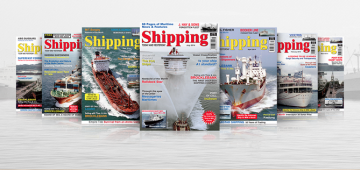



Comments
Sorry, comments are closed for this item